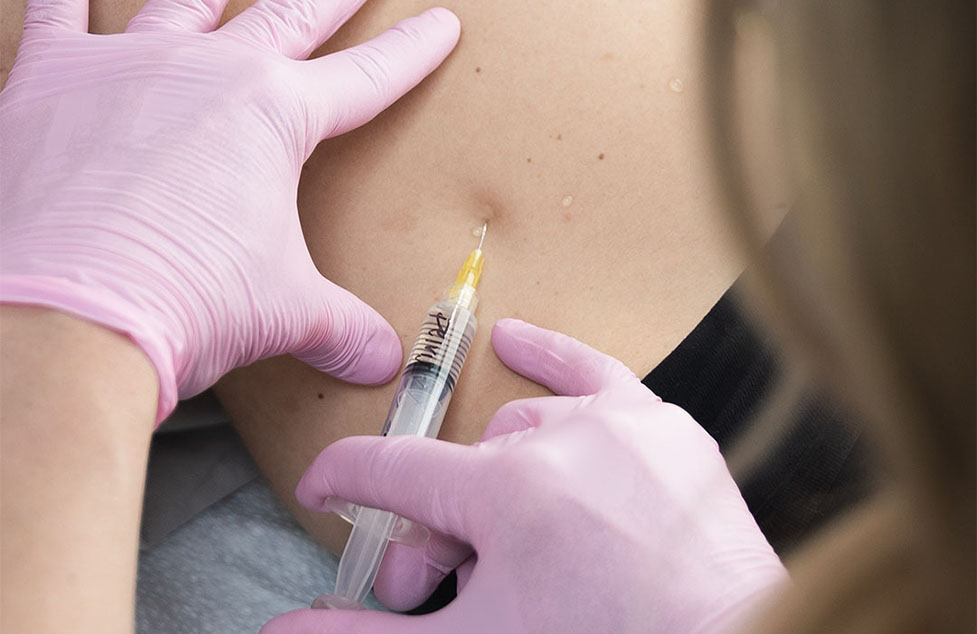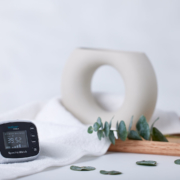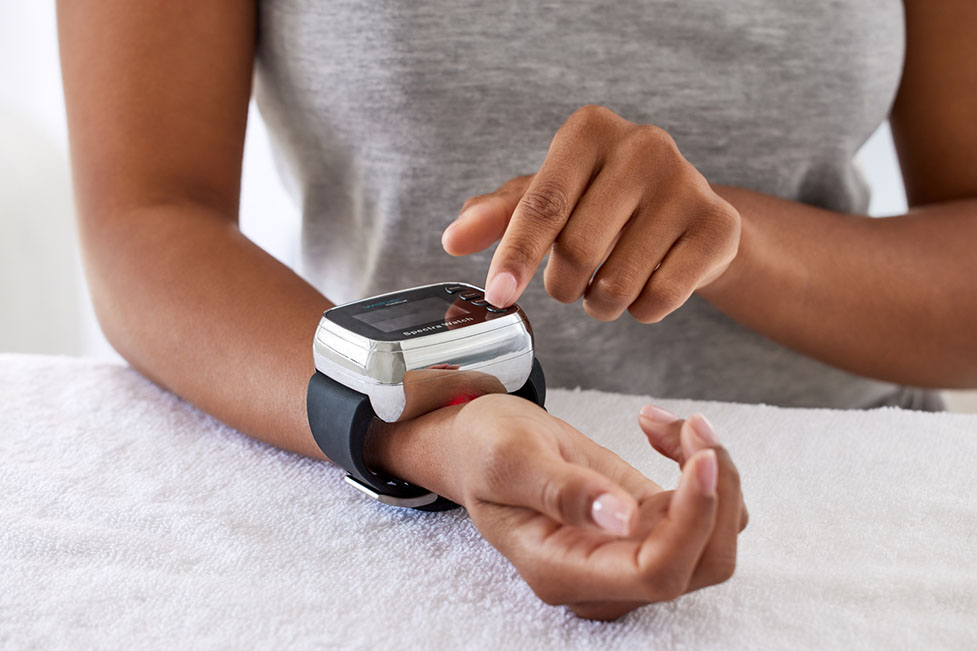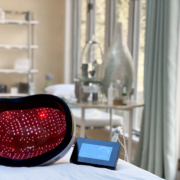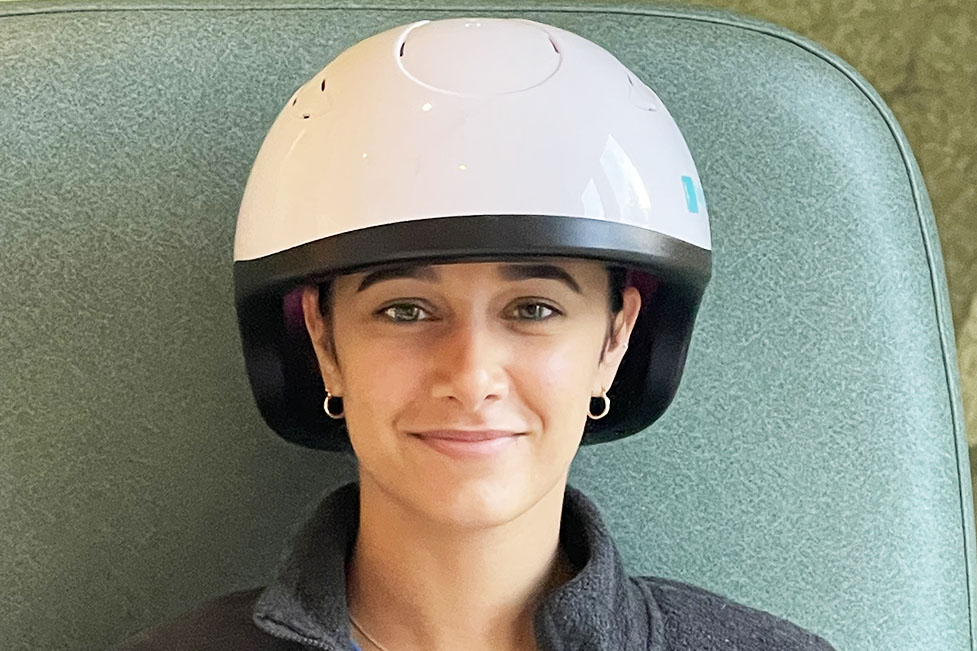Introduction to Neural Therapy
Neural therapy, also known as therapeutic local anesthesia (TLA) or therapeutic neural blockade, is the injection of local anesthetics into carefully selected points of the body. These trigger point injections can greatly improve a variety of chronic conditions. Neural therapy is a comprehensive healing system well known in Europe, especially in Germany.
This holistic therapy focuses on the relief of chronic pain and long-term illness. Various symptoms can be stopped by injecting local anesthetics into scars, acupuncture points, peripheral nerves, and glands.
Benefits of Neural Therapy
Neural therapy has been used in the treatment of hundreds of conditions including:
- Depression
- Hormonal imbalances
- Dizziness
- Allergies
- Asthma
- Skin diseases
- Hemorrhoids
- Ulcers
- Chronic bowel problems
- Prostate and bladder problems
- Migraines
- Kidney disease
- Arthritis
- Back pain
- Other soft-tissue injuries
Neural therapy addresses these common diagnoses by various methods. These trigger point injections help stabilize the membranes surrounding nerves which are creating an imbalance, and therefore symptoms. Mast cells, which work as part of the immune response and often are responsible for inducing allergy type symptoms, are also stabilized with neural therapy injections.
Neural therapy promotes blood vessel dilation, therefore increasing circulation to bring blood and nutrients to areas in need. It also helps reduce and prevent edema, or swelling. Stimulating blood vessel growth factors and regeneration to promote healing are among the additional benefits of neural therapy injections.
How Neural Therapy Injections Works
‘Interference fields’ are areas of chronic inflammatory material that cannot be removed or metabolized naturally. Interference fields consist of lymphocytes/ plasmocytes infiltration and a disaggregation of the base substance.
For example, scars create aberrant electrical fields which create confusion in the nervous system. Neural therapy works to take the aberrant signals and shut them down so the nervous system can reset itself, allowing the body to return to a state of balance and well-being.
Neural therapy, as suggested by its name, aims to rectify the functioning of the autonomic nervous system of the body.
Neural therapy works by correcting dysfunctions in the autonomic nervous system. Organs, glands, nervous system, and body tissues are able to function better by eliminating disturbances of the body’s electrophysiology (interference fields) with precise trigger point injections. This restoration of function helps eliminate chronic disease conditions. One possible explanation for this improvement is neural therapy increases circulation to injured tissues and organs.
One of the most accepted medical theories of neural therapy is the ground-system theory. The ground-system refers to the extracellular space (the matrix) composed of the fibroblast in interstitial fluids, where there are endings of the autonomic nervous system, ending capillaries of the arterial system, and the beginning capillaries of the venous and lymphatic systems. The proper function of this space is necessary for the health of the cells, organs, systems, and the whole body. Neural therapy aims to regulate the abnormal neuronal information (signals) within the ground-system.
The various techniques utilized in neural therapy include:
- Direct infiltration of scars or affected area
- Autonomic ganglia or plexus blocks
- Cranial nerve blocks
- Peripheral nerve blocks
- Perivascular injections
- Intraspinal injections: epidural, paravertebral, etc.
- Segmental therapy
- Injection into foci
- Injection into affected joints
- Acupuncture point injections
- Ear acupuncture injections
Neural therapy injections involve injecting a small amount of anesthetic into certain biologic points or scars in order to free any energy blocks in the physical body. Very small needles are used to minimize discomfort.
In many ways, it is similar to acupuncture but more powerful. More often than not, response to treatment of an interference field is temporary, sometimes lasting less than a day. However, even a very short response is encouraging and indicates that treatment should be attempted again. Each time an interference field is treated; there should be a longer response. Treatment is repeated until it is no longer required.
See how we can help you restore complete health of body, mind & spirit.
Join our mailing list and receive exclusive offers + information!
Behind the Science
Science & Safety
Long-term results of therapeutic local anesthesia (neural therapy) in 280 referred refractory chronic pain patients BMC Complementary and Alternative Medicine, 2015 Jun
A study of 280 chronic pain patients were treated with neural therapy injections. Their results were measured after a one year follow up. After one year, 74.1% of patients needed fewer or no pain medications at all for their chronic pain condition. Researchers concluded the results indicated a cycle of pain had been broken for these patients who previously had no long term relief from their pain. There were no adverse events or complications during this trial.
Evaluation of the effects of neural therapy in patients diagnosed with fibromyalgia Turk J Phys Med Rehabil. 2019 Mar
A multi-center trial including 72 patients diagnosed with fibromyalgia were treated with a combination of neural therapy and exercise therapy. Researchers found patients who received neural therapy and exercise therapy had significantly greater improvement in pain and increased emotional well-being when compared to the group who only received exercise therapy. This shows how neural therapy can be a beneficial treatment when combined with traditional methods.
Comparison of Efficacy of Neural Therapy and Physical Therapy in Chronic Low Back Pain Afr J Tradit Complement Altern Med., 2013 Apr
A 2013 study compared neural therapy and physical therapy in the treatment of chronic low back pain. Researchers found patients treated with neural therapy had similar improvements in pain, function, depression, and overall quality of life when compared to the physical therapy group making neural therapy a useful alternative method when managing chronic low back pain.
Evaluation of neural therapy effect in patients with piriformis syndrome J Back Musculoskelet Rehabil. 2018
Another study looked at the efficacy of neural therapy when combined with stretching exercises to treat low back pain caused by piriformis syndrome. After six sessions of the combination therapy, patients had more obvious improvement in pain and disability scores when compared to the control group (stretching exercises only). This study consisted of 102 patients and is another example of how neural therapy can be an excellent addition to someone’s pain treatment plan.
Spectrum
Where does Neural Therapy fall on the medical spectrum?
Neural Therapy falls under ‘Biological Medicine’ section of the medical spectrum.
Receiving Therapy
Neural Therapy Protocol – Receiving Treatments
The New York Center of Innovative Medicine (NYCIM) is happy to offer patients Neural Therapy. However, the use of this or any of our numerous therapeutic options is only performed on patients after an in-depth health evaluation. Our ultimate goal is the complete restoration of health in the most efficient and safe manner, and with so many therapeutic options, it is impossible to know if Neural Therapy is right for you without an initial evaluation at our clinic.
More Info
Resources & Experts
Frequently Asked Questions
What is neural therapy?
Neural Therapy uses trigger point injections to provide pain relief and restore function.
Are neural therapy injections and trigger points injections the same?
Trigger point injections focus on knotted up tissues and muscles, while neural therapy focuses on other areas including scar tissue, acupuncture points, and areas related to the nervous system to treat pain.
What is an interference field?
Interference fields are areas of chronic inflammation that consist of cells and tissues that can’t be naturally removed or metabolized.
Schedule Now
Neural Therapy
Curious if this therapy is right for you? Take our quiz to see if you’re a candidate and book a free consultation with an Innovative Medicine Patient Ambassador.
or Contact Us
Introduction to Hydrogen Peroxide Therapy
Hydrogen peroxide therapy, or H2O2 therapy, has been around for nearly 150 years. H2O2 was first discovered in 1818 and the first medicinal use of H2O2 was in 1888. At the time hydrogen peroxide was claimed to be an effective treatment for scarlet fever, diphtheria, whooping cough, and asthma. Hydrogen peroxide given intravenously was also used to treat influenza pneumonia during the 1918 epidemic.
Hydrogen peroxide therapy is considered oxidative therapy which simply means the therapy contains oxygen. Other forms of oxidative therapies include ozone therapy, ultraviolet blood irradiation therapy, and more.
Benefits of Hydrogen Peroxide Therapy
There are many benefits of hydrogen peroxide therapy with most involving boosting the immune system and fighting off infection. Some of the ways H2O2 therapy is used to fight infection include:
- Boost immune system cell production including white blood cells, interferon, tumor necrosis factor, and other cytokines used to fight infection
- Inhibit viral, bacteria, fungal, and parasitic growth directly and indirectly
- Oxidizes waste and toxins
Other benefits include improving oxygen delivery from the blood to tissues and helping improve metabolism.
Hydrogen peroxide therapy also increases the overall oxygen content of tissues and helps clear out mucus plugs caused by emphysema and pneumonia.
How Hydrogen Peroxide Therapy Works
Hydrogen peroxide therapy severely inhibits the growth of anaerobic organisms (bacteria and viruses that use carbon dioxide for fuel and leave oxygen as a by-product). This action is immediate, on contact with the anaerobic organism. H2O2 provides singlet oxygen, which, in turn, transforms biological waste products and industrial toxins into inert substances by oxidizing them. This makes them easy to handle for the kidneys and liver. It doubles the rate of enzymatic metabolism in the mitochondria within each cell, thus enabling the body to cleanse itself of toxins and still have plenty of energy to handle the business of living from moment to moment. This increase in metabolism probably accounts for some of the antibacterial, antifungal, and antiviral effects of hydrogen peroxide.
In the blood, hydrogen peroxide encounters two enzymes: catalase and cytochrome-C. Catalase drives the above reaction to completion immediately. That part of the hydrogen peroxide that binds with cytochrome-C, however, is not allowed to become water and singlet oxygen for a period of 40-45 minutes. After about 40 minutes of being bound to cytochrome-C this enzyme begins to act like catalase and breaks down the hydrogen peroxide to water and singlet oxygen. By this time, the hydrogen peroxide/cytochrome-C complex has been spread throughout the body. In this way, the benefits of hydrogen peroxide are made available to all cells.
With intravenous therapy, pharmaceutical-grade hydrogen peroxide is used under strict sterile technique. The amount of hydrogen peroxide is predetermined by a doctor. It also could be mixed with a 5% dextrose solution to which magnesium sulfate and a small amount of manganese sulfate are added to prevent vein sclerosis. First, a nurse or practitioner will sterilize the insertion area, then insert a clean sterilized needle. Once the needle is inserted into the vein it will be connected to a tube where hydrogen peroxide will flow through and reach the circulatory system. The administration takes about 90 minutes, depending on the amount of H2O2 used.
See how we can help you restore complete health of body, mind & spirit.
Join our mailing list and receive exclusive offers + information!
Behind the Science
Science & Safety
Inhibitory and Bactericidal Effects of Hydrogen Peroxide Production by Streptococcus pneumoniae on Other Inhabitants of the Upper Respiratory Tract ASM Journals Infection and Immunity Vol. 68, No. 7
An in vitro study evaluated the effects of hydrogen peroxide as a byproduct of streptococcus pneumoniae on other bacteria found in the upper respiratory tract. An inverse relationship was found showing where there was more hydrogen peroxide found, fewer bacteria such as H. influenzae proliferated. This conclusion shows promise for using hydrogen peroxide therapy to reduce and stop the growth of harmful bacteria and viruses.
Synergic antibacterial effect between visible light and hydrogen peroxide on Streptococcus mutans Journal of Antimicrobial Chemotherapy, Volume 57, Issue 5, May 2006
Researchers combined H2O2 therapy with blue light to determine the synergistic antibacterial effects on laboratory samples. Results showed the combination inhibited bacterial growth by 95% rather than only 3% when only blue light therapy was used or 30% when only H2O2 was used.
Antibacterial activity of hydrogen peroxide and the lactoperoxidase-hydrogen peroxide-thiocyanate system against oral streptococci. Infect Immun. 1994 Feb
Researchers evaluated the bacteriostatic activity of H2O2 in the absence of the enzyme lactoperoxidase. It was found in combination with other enzymes, H2O2 is more effective at inhibiting bacterial growth and metabolism, but is still has significant bactericidal benefits on it’s own.
Spectrum
Where does Hydrogen Peroxide Therapy fall on the medical spectrum?
Hydrogen Peroxide Therapy falls under ‘Biological Medicine’ section of the medical spectrum.
Receiving Therapy
Hydrogen Peroxide Therapy Protocol – Receiving Treatments
The New York Center of Innovative Medicine (NYCIM) is pleased to offer hydrogen peroxide therapy to our patients. However, the use of this or any of our numerous therapeutic options is only performed on patients after an in-depth health evaluation. Our ultimate goal is the complete restoration of health in the most efficient and safe manner, and with so many therapeutic options, it is impossible to know if hydrogen peroxide therapy is right for you without an initial evaluation at our clinic.
More Info
Resources & Experts
Frequently Asked Questions
What is hydrogen peroxide therapy?
Hydrogen peroxide therapy is a form of oxidative therapy meant to increase the amount of circulating H2O2 by infusing it. This is done often to help fight infection and improve oxygenation to vital tissues.
How does hydrogen peroxide therapy work?
Hydrogen peroxide therapy involves the intravenous infusion of a predetermined amount of H2O2. This is done during a sterile procedure and takes about 90 minutes to complete.
What is the difference between ozone therapy and hydrogen peroxide therapy?
Ozone therapy involves the use of ozone which is composed of three oxygen atoms versus H2O2 which has two hydrogens and two oxygen atoms.
Schedule Now
Hydrogen Peroxide Therapy
Curious if this therapy is right for you? Take our quiz to see if you’re a candidate and book a free consultation with an Innovative Medicine Patient Ambassador.
or Contact Us
Introduction to Ultraviolet Blood Irradiation Therapy
Ultraviolet Blood Irradiation Therapy, often called UBI Therapy or UVBI/UVB Light Therapy, is a treatment historically used to fight infection. UBI Therapy was first used in 1928 and extremely popular prior to the advent of antibiotic therapy. UVBI Light Therapy was a popular treatment for septicemia, pneumonia, botulism, and a number of other bacterial and viral related illnesses.
When antibiotic development and use increased in the 1950s, Ultraviolet Blood Irradiation Therapy slowly decreased in popularity. But with more and more bacterial strains becoming resistant to nearly all antibiotic options and with antibiotics carrying a plethora of unwanted effects – more people are now turning to the benefits of UVBI Light Therapy.
Benefits of UVBI Light Therapy
Many of the benefits of UVBI Light Therapy focus on removing pathogens from the body. This is done with a number of functions, including increasing red blood cell and white blood cell production and increasing overall oxygen levels in the blood.
Benefits of Ultraviolet Blood Irradiation Therapy include:
- Increasing oxygen levels in organs and tissue
- Improving overall circulation
- Regulating white blood cell production by either stimulating or suppressing function
- Destroying pathogens such as bacteria and viruses
- Improves resistance to future pathogens
- Anti-inflammatory effects
How UVBI Light Therapy Works
UVBI Light Therapy works by altering, stimulation, and reversing the function of many cells and their processes. UVBI Light Therapy can stimulate the production of red blood cells that carry vital oxygen to organs and tissues and subsequently increase overall oxygen levels.
UBI Therapy is considered an immune modulator, meaning it can help normalize function by either increasing production and stimulation or suppressing immune function. This is helpful because your immune system doesn’t always need to be more production – but on the contrary – many diseases like asthma are made worse by an overactive immune system.
Ultraviolet Blood Irradiation Therapy impacts immune cell function and can help mediate neutrophil and lymphocyte responses. In many autoimmune diseases, the immune system is hyperactive and hyperstimulated, and UVBI Light therapy can suppress their function to improve disease status.
In addition to the effects on your own blood cells, UVBI Therapy prevents bacterial and viral DNA synthesis. This prevents the cells from replicating or repairing and eventually the pathogens die off completely. UBI therapy promotes rapid detoxification of toxins and helps lower inflammatory markers such as the erythrocyte sedimentation rate.
UVBI Light Therapy can be administered by removing blood and then circulating into a machine, exposing your blood to the ultraviolet light. By doing this, the viral or bacterial DNA is damaged or altered, leading to cell death.
After this is done, your blood is reinfused back into your body, much like a transfusion, but using your own blood. Your body then recognizes these damaged or altered pathogens and triggers an immune response for your body to do the rest.
Another method of UVBI Therapy administration consists of directly inserting the ultraviolet optical fiber into a vein and exposing the blood this way – beneath the skin.
See how we can help you restore complete health of body, mind & spirit.
Join our mailing list and receive exclusive offers + information!
Behind the Science
Science & Safety
A controlled clinical trial of ultraviolet blood irradiation (UVBI) for hepatitis C infection Cogent Medicine, Volume 6, 2019
An FDA Phase I controlled clinical trial evaluated the use of Ultraviolet Blood Irradiation Therapy on treating patients with teh hepatitis C virus. Ten patients received five treatments over three weeks. After the treatments, 9 out of 10 patents had an average decrease in viral load by 56%. There were no adverse events reported and it was concluded that UVB Therapy was safe and effective in managing hepatitis C.
Effectiveness of extracorporeal ultraviolet blood irradiation in patients with chronic obstructive bronchitis Probl Tuberk .1998;(1):42-4
A study of the use of Ultraviolet Blood Irradiation in the treatment of chronic obstructive bronchitis in 67 patients showed a great improvement in the participants breathing status (forced expiratory volume per second). There was also a significant decrease in the erythrocyte sedimentation rate. The bacterial growth was greatly reduced showing UVB Light Therapy to have great benefits in treating chronic obstructive bronchitis.
Effect of UV-irradiation of blood on the course of adaptation to conditions of hypodynamia Europe PMC, Apr 1996
Evaluating the effects of UVB Light Therapy on stress was performed in rabbits. UBI Therapy improved the body’s ability to manage unpredictable stress and “enhance the organization and process structure in the activation of neutrophils” to stop blood coagulation and “changed the atherogenic condition”. Researchers concluded Ultraviolet Blood Irradiation therapy enhanced the body’s ability to adapt under stress.
Spectrum
Where does Ultraviolet Blood Irradiation Therapy fall on the medical spectrum?
UVBI falls under ‘Biological Medicine’ section of the medical spectrum.
Receiving Therapy
Ultraviolet Blood Irradiation Therapy Protocol – Receiving Treatments
The New York Center of Innovative Medicine (NYCIM) is pleased to offer various forms of ultraviolet blood irradiation therapy, including the advanced PL2020 therapy. However, the use of this or any of our numerous therapeutic options is only performed on patients after an in-depth health evaluation. Our ultimate goal is the complete restoration of health in the most efficient and safe manner, and with so many therapeutic options, it is impossible to know if UVBI is right for you without an initial evaluation at our clinic.
PODCAST - The Story of UVBI

More Info
Resources & Experts
Frequently Asked Questions
What is Ultraviolet Blood Irradiation Therapy?
Ultraviolet Blood Irradiation Therapy, also known as UVBI therapy, is the therapeutic use of exposing blood to specific ultraviolet light to achieve many benefits including increased oxygenation, improved immune function, destruction of pathogens, and decreased inflammation.
How Does UVBI light therapy work?
UVBI light therapy works by stimulating, suppressing, or destroying cellular function. UVBI light therapy damages or alters bacterial and viral DNA in an effort to destroy it. UBI Therapy also activates red and white blood cell production to further promote healthy tissue and organ function.
Schedule Now
Ultraviolet Blood Irradiation Therapy
Curious if this therapy is right for you? Take our quiz to see if you’re a candidate and book a free consultation with an Innovative Medicine Patient Ambassador.
or Contact Us
Introduction to Ozone Therapy
Ozone therapy is an effective therapeutic method to increase oxygenation, support detoxification, and stimulate the immune system. Ozone therapy uses ozone, which is a blue-colored form of oxygen, composed of three oxygen atoms instead of two. It’s the addition of the third oxygen atom that makes ozone “supercharged” oxygen and gives it all of its remarkable medical properties.
You may know of the presence of ozone as a natural component in our environment (think the smell after a lightning storm). But you may not know ozone is a powerful oxidizer and potentiator of human physiology stimulating all sorts of physiological activity.
Ozone therapy works by increasing oxygen use in turn assisting organ function, hormonal regulation, anti-aging, digestion, elimination, reproduction, memory, and many other functions.
The use of ozone to treat various medical conditions was first developed in Germany in the early 1950s.
Ozone use in medicine from a holistic understanding is based on the fact that toxins and pathogens in the body are normally destroyed by the process of oxidation. Oxidation breaks the toxins down into carbon dioxide and water and then eliminates them from the body. However, if the body is weak or deficient in oxygen, it can’t eliminate toxins adequately and a toxic reaction can occur. In minor cases, a toxic buildup can lead to fatigue, and a wide range of diseases can result when poor oxygenation is chronic.
Today, medical ozone therapy is common throughout European medical clinics, and its use has gradually been spreading in America over the last 25 years. This oxidative therapy is often administered for the support of all infectious diseases as well as chronic conditions such as chronic fatigue syndrome, arthritis, Alzheimer’s Disease, Multiple Sclerosis, dementia, fibromyalgia, heart disease, and many more.
Benefits of Ozone Therapy
Clinical experience has shown ozone therapy may be used for a number of conditions and issues. Benefits of ozone therapy include:
- Inactivation of bacteria, viruses, and fungi
- Enhancement of circulation
- Stimulation of enzymatic activity and oxygen metabolism
- Acceleration of glycolysis in red blood cells
- Increase of tissue oxygenation
- Increasing the release of O2 from hemoglobin in the blood to tissue
- Enhancement of formation of acetyl CoA (vital for detoxification)
- Increase of red blood cell pliability, blood fluidity, and arterial pO2
- Stimulation of the reticuloendothelial systems, thus rebuilding tissue
- Activation of the enzymes involved in peroxide or free radical destruction
- Disruption of the lipid cell membranes of anaerobic pathogens and weak or defective cells
How Ozone Therapy Works
Ozone, referred to as O3, is a molecule consisting of three oxygen atoms. Because ozone is a relatively unstable molecule and will not last very long, it breaks down into more stable oxygen molecules. In biological systems, including the human body, ozone instantaneously interacts with double bonds found in amino acids and lipids to form peroxides.
These peroxides can easily penetrate cell membranes and increase oxygenation of intracellular compounds (NADH and FADH2) involved with energy production. In addition, ozone therapy stimulates the uptake of oxygen by stimulating the DPG enzyme, which supports the release of oxygen from hemoglobin molecules so it can be used by the cell.
When cells get the optimal amount of oxygen, they function properly and help to prevent or inhibit disease.
Ozone has the following actions:
- Antiseptic / disinfectant
- Bactericide / virucide / fungicide / parasiticide / parasiticide
- Hemostat (assists with bleeding)
- Analgesic (pain relief)
- Circulatory stimulant
- Wound cleansing/wound healing agent
Ozone performs these functions through ionization, subatomic exchange (oxidation), electron/free radical reactions, and electromagnetic reactions resulting in profuse photon and energy transfer.
More simply, because ozone is an oxygen molecule without an electron, it is attracted to electron-rich microorganisms. After it strips away the organisms’ electrons, the cause of the disease dies. Healthy human cells are not affected because they produce antioxidants making them impervious to ozone.
The most common method of ozone administration is intravenously (major autohemotherapy, minor autohemotherapy, or direct intra-arterial or intravenous injection), but may also be administered through:
- Intramuscular injection
- Intra-articular injections
- Specific tissue injections
- Local application to external body surfaces (transparent Teflon bags)
- Rectal insufflation
- Vaginal insufflation
Ozone injections are administered for just about every joint in our bodies, including elbows (tennis elbow), knees and hips, shoulders (rotator cuffs), ankles and fingers (arthritis), wrists (carpal tunnel), and essentially all cartilage and tendons found in the body.
Ozone therapy through intravenous administration is utilized through a machine, where blood is taken intravenously and passed through the specialized machine that infuses ozone into the blood at any given amount.
See how we can help you restore complete health of body, mind & spirit.
Join our mailing list and receive exclusive offers + information!
Behind the Science
Science & Safety
Ozone therapy is used by more than 40,000 physicians in more than 50 countries, and its effects are proven and consistent, safe with minimal and preventable side effects.
Therapeutic efficacy of ozone in patients with diabetic foot European Journal of Pharmacology, 2005 Oct 31
A randomized controlled trial of 101 patients with type 2 diabetes and diabetic feet were treated with local and rectal insufflation of ozone gas. The other group received topical and systemic antibiotics to compare the benefits of the two treatments. Researchers found ozone therapy “improved glycemic control, prevented oxidative stress, normalized levels of organic peroxides, and activated superoxide dismutase”. Furthermore, the group treated with ozone therapy had fewer amputations than the control group. There were no side effects of ozone therapy. This trial concluded medical ozone treatment to be an effective and safe alternative treatment of diabetes and complications from diabetes.
Acupuncture is worth a try for chronic pain Harvard Health Publications
Research from an international team of experts adds to the evidence that it does provide real relief from common forms of pain. The team pooled the results of 29 studies involving nearly 18,000 participants. Some had acupuncture, some had “sham” acupuncture, and some didn’t have acupuncture at all. Overall, acupuncture relieved the pain by about 50%.
A randomized trial showed oral administration of ozone therapy prior to a drug used to treat chronic pulmonary obstructive disease to be helpful in reducing neutrophil activation and recruitment. This study shows promise in the complimentary use of ozone therapy to treat neutrophil-dominant diseases.
Possible Therapeutic Effects of Ozone Mixture on Hypoxia in Tumor Development Anticancer Research, 2017 Feb
Recent discoveries underline that ozone therapy could be an additional therapy for cancer patients receiving radio-chemotherapy. The use of ozone therapy enhances the action of chemotherapy and simultaneously reduces side-effects, such as nausea, vomiting, hair loss, and fatigue and many more. This can also result in a larger physical and mental wellbeing and improve one’s quality of life.
Spectrum
Where does Ozone Therapy fall on the medical spectrum?
Ozone therapy falls under ‘XXX’ section of the medical spectrum.
Receiving Therapy
Ozone Therapy Protocol – Receiving Treatments
The New York Center of Innovative Medicine (NYCIM) is pleased to offer ozone therapy at our clinic. However, the use of this or any of our numerous therapeutic options is only performed on patients after an in-depth health evaluation. Our ultimate goal is the complete restoration of health in the most efficient and safe manner, and with so many therapeutic options, it is impossible to know if ozone therapy is right for you without an initial evaluation at our clinic.
More Info
Resources & Experts
- Bringing Ozone Therapy Home: Simply O3 Product Review
Product Review
Frequently Asked Questions
What is ozone therapy?
Ozone therapy is an oxidative therapy consisting of administering ozone (O3) via various routes including intravenously to increase overall oxygenation in the body to help with detoxification, improve cellular function, and support the immune system.
How is ozone therapy administered?
Ozone therapy can be administered intravenously, intra-articularly, orally, topically, as well as several other ways.
How does ozone therapy work?
Ozone therapy works by interacting with double bonds found in amino acids and lipids to form peroxides. These peroxides then penetrate the cell membranes and increase oxygenation to vital functions and tissues.
Schedule Now
Ozone Therapy
Curious if this therapy is right for you? Take our quiz to see if you’re a candidate and book a free consultation with an Innovative Medicine Patient Ambassador.
or Contact Us
What is the Weber Spectra Laser Watch
The Weber Spectra Laser Watch brings the power of low-level laser therapy (LLLT) into your home for you to use to address multiple health problems and conditions. The Weber Spectra Laser Watch contains diodes of red, blue, yellow, and green light to act on various pathologies.
By using LLLT, this wearable laser technology stimulates metabolic and healing properties beneath the skin. LLLT is different from other forms of therapy in that it does not create a thermal response so there is no heating or risk of burns with the use of this device.
By improving cellular energy and metabolism with the Weber Spectra Laser Watch, your overall health and wellness can be improved.
Benefits of Weber Laser Watch
With the Weber Spectra Laser Watch you get all the benefits of low-level laser therapy in the convenience of your home. You’re also able to move about and continue on with your day without being confined to one space or in a clinic for treatment.
Each light color has its own set of specific benefits. There are also benefits found with a combination of multiple colors when used with the Weber Spectra Laser Watch.
Red light supports red blood cell function and production as well as encourages microcirculation.
Green light improves ATP production and increases oxygen delivery while blue light releases nitric oxide. Nitric oxide plays a crucial role in ant-aging and repairing damaged cells and tissue.
Yellow light has antioxidative effects as well as helps boost mood by increasing serotonin and vitamin D production.
General benefits of LLLT with the Weber Spectra Laser include:
- Increase in cellular energy by increasing ATP synthesis
- Immune system stimulation
- Improves microcirculation
- Improves the function, behavior and cell elasticity of red blood cells
- Increases oxygen delivery
- Releases Nitric oxide
- Reduces down blood pressure
- Reduces inflammations
- Pathogen deactivation
- Detoxification
- Improved mood
- Pain relief
Those who suffer from fatigue may greatly benefit from the Weber Spectra watch due to its inherent effects on improving cellular metabolism and support mitochondrial function. There may also be anti-aging benefits of the device.
Conditions that may benefit from Weber Spectra Laser watch therapy include:
- Diabetes
- Liver disease
- Kidney disease
- Metabolic disorders
- Cardiovascular diseases
- Allergies
- Chronic Inflammation
- Hypertension
- Autoimmune diseases
- Sleep disturbances
- Tinnitus
- Depression
- Chronic fatigue syndrome
How the Laser Watch Works
The Weber Spectra Laser Watch uses the same laser technology and application as the Weber EndoLaser for intravenous laser therapy. The distinction is that the laser is not applied inside the vein of the patient through a specialized intravenous catheter, rather the laser is applied directly on the skin of the wrist and irradiates through the skin and into the major radial artery/vein. In addition, the placement of 10 separate laser beams align with specific acupuncture points in the wrist as additional stimulation of these points.
Low-level laser therapy (LLLT) creates a photochemical effect and causes biochemical changes to occur within damaged cells. This reaction is similar to what happens to plants with photosynthesis – using light to create energy.
Once this photochemical effect induces biochemical changes, cells can be regenerated by telling your body to heal itself. Growth factors are stimulated thanks to this effect which assists in healing, pain relief, and overall regenerative health.
LLLT promotes these cellular reactions by increasing and up-regulating transcription factors that lead to an increase in growth factor production.
The various colors used with the Weber Spectra Laser Watch stimulate different cellular components to improve health. The watch focuses the light diodes on the arteries in your wrist to transmit the effects into your bloodstream for systemic benefits.
See how we can help you restore complete health of body, mind & spirit.
Join our mailing list and receive exclusive offers + information!
Behind the Science
Science & Safety
Low-level laser (light) therapy increases mitochondrial membrane potential and ATP synthesis in C2C12 myotubes with a peak response at 3-6 hours Photochem Photobiol. 2015 Mar
Activity of Na+/K+-ATPase of red blood cells irradiated with Nd:YAG laser of various fluences. Results are presented as mean ± S.E.M. of the concentration of inorganic phosphate (n=8). Equation of the trend line and coefficient of determination (R2 ) are shown.
The Use of Low Level Laser Therapy (LLLT) For Musculoskeletal Pain MOJ Orthop Rheumatol. 2015
Low doses of LLLT have been shown to stimulate several growth factors as well as white blood cells and endothelial cells.
LLLT has been proven to stimulate collagen synthesis and promote neovascularization.
Review of Literature on Low-level Laser Therapy Benefits for Nonpharmacological Pain Control in Chronic Pain and Osteoarthritis Altern Ther Health Med . 2018 Sep
A 2018 literature review found LLLT to be helpful when working as a complementary therapy for pain management and osteoarthritic conditions.
Laser Acupuncture at HT7 Acupoint Improves Cognitive Deficit, Neuronal Loss, Oxidative Stress, and Functions of Cholinergic and Dopaminergic Systems in Animal Model of Parkinson’s Disease Evid Based Complement Alternat Med, 2014 Aug 5.
In conclusion, laser acupuncture at HT7 can improve neuron degeneration and memory impairment in animal model of PD partly via the decreased oxidative stress and the improved cholinergic and dopaminergic functions.
Spectrum
Where does the Weber Laser Watch fall on the medical spectrum?
The laser watch falls under the ‘Energy Medicine’ section of the medical spectrum.
Receiving Therapy
Receiving Weber Laser Watch Treatment
We are pleased to offer the Weber Laser Watch at our clinic, the New York Center for Innovative Medicine (NYCIM). We both apply the laser watch to patients who have tested to benefit from it during treatment as well as sell them directly to patients for use at home. We also utilize Weber Endolaser IV laser therapy as well as the Weber Infrared LED Helmet.
PODCAST - The Story of Weber Lasers

More Info
Resources & Experts
- The Story of IV Laser Therapy with Dr. Michael Weber and Jennifer Miele
Your Health. Your Story. Podcast
- Weber Medical – Weber Laser Watch PDF Presentation
PDF
- The Weber Laser Watch: A Product Review
Article
- Dr. Weber Explains How Red, Green, and Blue Lasers Impact the Body
Article and Video
Frequently Asked Questions
What is the Weber Spectra Laser Watch?
The Weber Spectra Laser Watch uses low-level laser light therapy technology to deliver healing properties through a wearable device. The watch contains red, green, blue and yellow laser diodes that when worn on the wrist shine specific light directly into the wrist and irradiates through the skin and into the major radial artery/vein. In addition, the placement of 10 separate laser beams align with specific acupuncture points in the wrist as additional stimulation of these points.
Schedule Now
Weber Laser Watch
Curious if this therapy is right for you? Take our quiz to see if you’re a candidate and book a free consultation with an Innovative Medicine Patient Ambassador.
or Contact Us
Introduction to the Weber LED Infrared Helmet
The Weber LED Helmet uses transcranial photobiomodulation therapy to address a number of concerns related to brain function and health.
The sophisticated device uses specific infrared light that is able to penetrate the skull and provide therapy to targeted brain areas. Using the Weber LED Helmet is non-invasive and painless. There is also no heat generated during use making it nonthermal.
The transcranial photobiomodulation technology used with the Weber LED Helmet has been used for Alzheimer’s Disease symptoms as well as improvement of symptoms related to Parkinson’s Disease, depression, and traumatic brain injuries (TBI).
The Weber LED Helmet can be personalized with multiple different settings available for use. There are various intensity levels, frequencies, and treatment times depending on a person’s needs.
Benefits of the Infrared Helmet
Benefits of the Weber LED Helmet including stimulating energy production in the brain and improving oxygen availability.
Cerebral blood flow and lymphatic flow can also be improved.
There can even be improvements in the protective features of the brain including anti-oxidant effects and improving the life cycle of cells.
These benefits can all translate into improvements in many common symptoms related to brain diseases. Here are a few brain disorders that have been improved by transcranial photobiomodulation technology:
- Alzheimer’s Disease
- Parkinson’s Disease
- Victims of Stroke
- Depression
- Traumatic Brain Injury
Benefits may include increased focus, cognitive function, less brain fog, and improved speech. Difficulties with walking or fine motor skills due to brain injury can be improved with transcranial photobiomodulation as well.
How the LED Helmet Works
The Weber LED Infrared Helmet looks very similar to a bicycle helmet, complete with foam pads to adjust for comfort and size. There are 320 diodes that are controlled through a handheld device that is connected via a chord to the helmet where treatment settings can be set. This includes setting duration (1-30 minutes), four intensity levels, and frequency (1 Hz – 20,000 Hz).
It is recommended to wear the Weber LED Helmet for 15-30 minutes daily or weekly, but a treatment plan is made with your practitioner to determine the best settings and duration for therapy.
Transcranial LED photobiomodulation has been shown to penetrate 4-5cm past the skull into brain tissue for direct therapeutic benefits.
Signaling pathways including molecular and intracellular pathways are activated by the LED diodes which can lead to tissue and circulation improvements.
See how we can help you restore complete health of body, mind & spirit.
Join our mailing list and receive exclusive offers + information!
Behind the Science
Science & Safety
Shining light on the head: Photobiomodulation for brain disorders, BBA Clinical (2016) BBA Clinical (2016)
Molecular and intracellular mechanisms of transcranial low-level laser (light) or photobiomodulation.
Cytochrome c oxidase and heat-gated ion channels are two of the most important molecular photoreceptors or chromophores inside neuronal cells. They absorb photons that penetrate into the brain.
The signaling pathways and activation of transcription factors lead to the eventual effects of PBM in the brain.
1. Short-term stimulation: ATP, blood flow, lymphatic flow, cerebral oxygenation, less edema
2.Neuroprotection: Upregulation of anti-apoptotic proteins, less excitotoxity, more antioxidants, less inflammation
3.Processes that help the brain to repair itself: Neurotrophins, neurogenesisand synaptogenesis
The Efficacy of 904 nm Laser Therapy for Alzheimer’s Diseases Radiology and Nuclear Medicine (VUmc)
Infrared light has been found to stop neuronal death which is a common cause of symptoms related to Alzheimer’s Disease. Laser therapy was shown to decrease the progression of Alzheimer’s Disease and improve behavior including improving the ability to have a conversation, reduce nervousness, and increase sociability.
Management of Post-Traumatic Stress (PTSD) Dementia and Other Neuro-Degenerative Disease with Photo-Medicine Open Journal of Psychiatry > Vol.7 No.4, 2017
The potential of transcranial photobiomodulation therapy for treatment of major depressive disorder Rev Neurosci . 2017
The exposure of PFC region using transcranial PBM therapy has potential antidepressant-like effects in MDD patients as it increases cerebral energy production via mitochondrial oxidative phosphorylation and enhances frontal cortex oxygen consumption.
In addition, TLLLT led to a significant increase in the left middle cerebral artery (up to 30%) and basilar artery (up to 25%) blood flow velocity.
TLLLT may result in significant amelioration of the symptoms and may serve as a potential treatment regimen for MDD patients.
Weber LED Infrared Helmets are considered safe, painless, noninvasive, and non-thermal.
Spectrum
Where does the Weber LED Infrared Helmet fall on the medical spectrum?
The helmet falls under the ‘Energy Medicine’ section of the medical spectrum.
Receiving Therapy
Receiving Weber LED IR Helmet Treatment
We are pleased to offer Weber LED Infrared Helmet treatments at our clinic, the New York Center for Innovative Medicine (NYCIM). However, the use of this or any of our numerous therapeutic options is only performed on patients after an in-depth health evaluation. We also offer the ability to purchase the LED helmet to patients of our clinic.
PODCAST - The Story of Weber Lasers

-
See if the Weber IR Helmet is right for you.
- Our clinic has helped thousands from around the world. Find out if we can help you.
- Take the Quiz
More Info
Resources & Experts
- The Story of IV Laser Therapy with Dr. Michael Weber and Jennifer Miele
Your Health. Your Story. Podcast
- Dr. Mark Iwanicki Explains the Weber LED Infrared Helmet – Video 1
Video
- Dr. Mark Iwanicki Explains the Weber LED Infrared Helmet – Video 2
Video
- Weber Medical – Weber LED Infrared Helmet Introductory PDF
PDF
- Weber LED Infrared Helmet Frequency Recommendations
PDF
- The Weber Laser Watch: A Product Review
Article
- Dr. Weber Explains How Red, Green, and Blue Lasers Impact the Body
Article and Video
Frequently Asked Questions
What is the Weber LED Infrared Helmet?
The Weber LED Infrared Helmet is a device that provides transcranial LED and low-level light therapy via a highly personalized and noninvasive method where a helmet is worn on the head. The helmet contains 320 diodes set at 810nm. Optimum wavelength for maximum skull penetration is between 805 nm and 830 nm (infrared). Studies show that the light reaches a depth of 4-5 cm past skull (or 3 cm into brain).
Transcranial Low-Level Laser Therapy (TLLLT) is the direct irradiation of the human brain with highly focused infrared lasers. Unlike other wavelengths, infrared light has the ability to penetrate bones and to bring light energy to the targeted brain areas. Light energy is absorbed by different types of cells to trigger a broad range of intra-cellular effects.
What is the Weber LED Infrared Helmet used for?
The Weber LED Infrared Helmet is used to activate various pathways in the brain to improve symptoms related to a number of brain disorders including dementia, Parkinson’s, depression, and stroke.
How long does a Weber LED Infrared Helmet treatment take?
Treatment can last from 1-30 minutes and is recommended to do 1-2 times per day/week depending on practitioner recommendations.
Schedule Now
Weber LED Infrared Helmet
Curious if this therapy is right for you? Take our quiz to see if you’re a candidate and book a free consultation with an Innovative Medicine Patient Ambassador.
or Contact Us



















